Introduction:
Sometimes, you might want to move your website to a different place or make a copy of it, especially if you're using platforms like WordPress or Drupal. In the past, doing this involved a long and complex process, including copying files, setting up databases, and updating configuration files.
Now, it's much easier with Softaculous's Clone feature. This tool allows you to effortlessly make a duplicate of your website, whether it's built on WordPress, Drupal, Joomla, etc. You'll get an exact copy of your site, including images, content, and plugins, but not the domain name. This cloned website can be saved for testing or to simplify the process of moving your site to a new location.
Here are the common situations when you might need to clone a WordPress website:
- Creating a Staging Site for Testing
- Migrating to a New Host
- Launching a New Website on a Different Domain
- Developing Locally
- Creating Backups
- Rebranding or Redesign
- Creating a Sandbox for Learning and Experimentation
Here's a quick, step-by-step guide on how to use Softaculous to clone your website.
Step 1: Login to your cPanel using the username and password.(i.e., https://yourdomain.com:2083 or https://yourdomain.com/cpanel)

Step 2: Find and click on the Softaculous Apps Installer icon in the Software section. You can also perform this action through "Wordpress Manager by Softaculous". Let's check both the methods:
a. Softaculous Apps Installer:
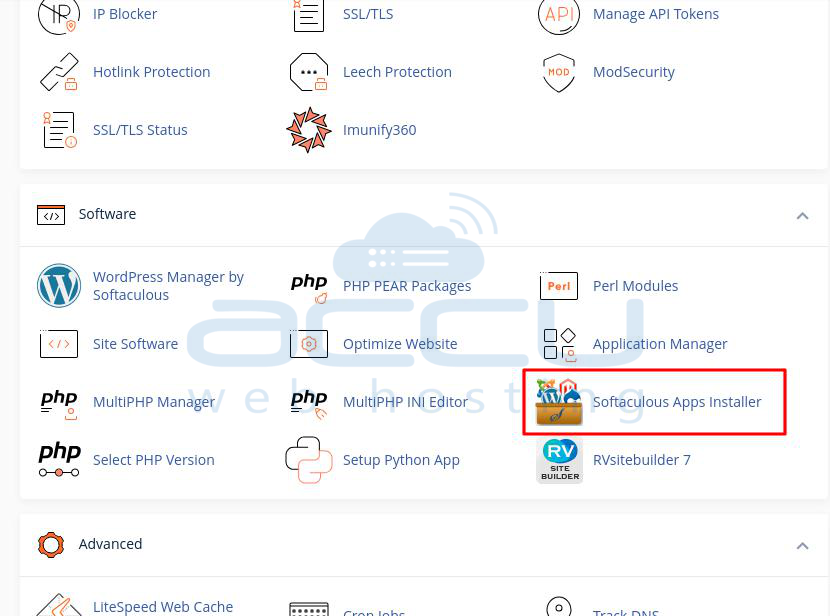
Step 3: In Softaculous, click on the "All Installations" icon in the top right corner.
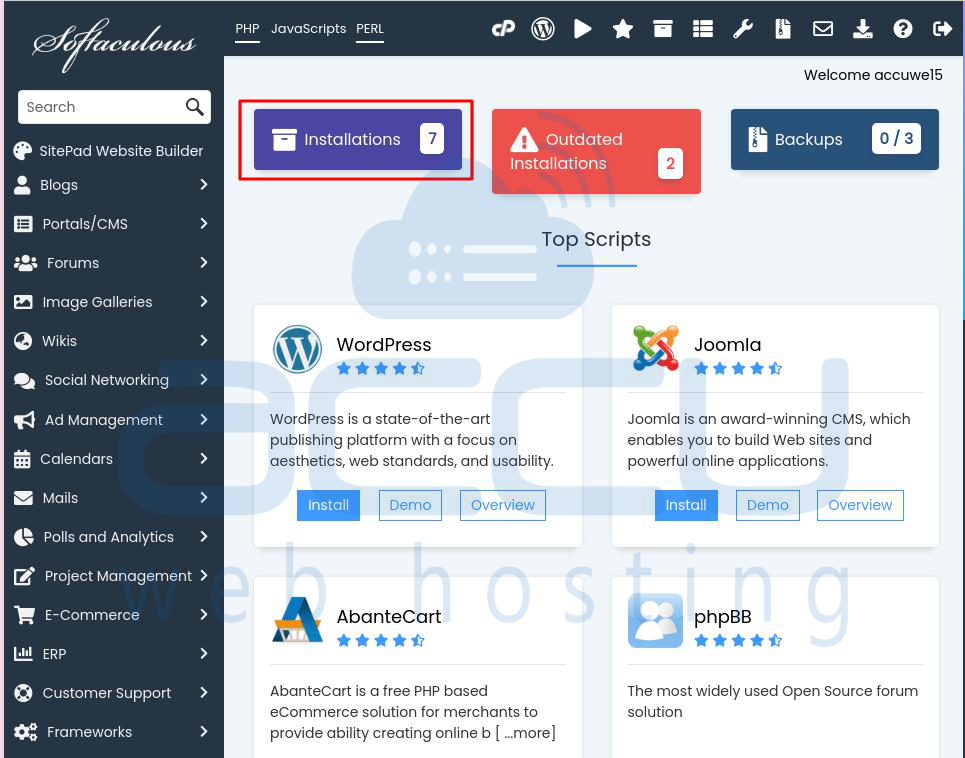
Step 4: From your list of installed applications, click the "Clone" icon next to the WordPress website you want to clone. This will redirect you to Clone Installation page.
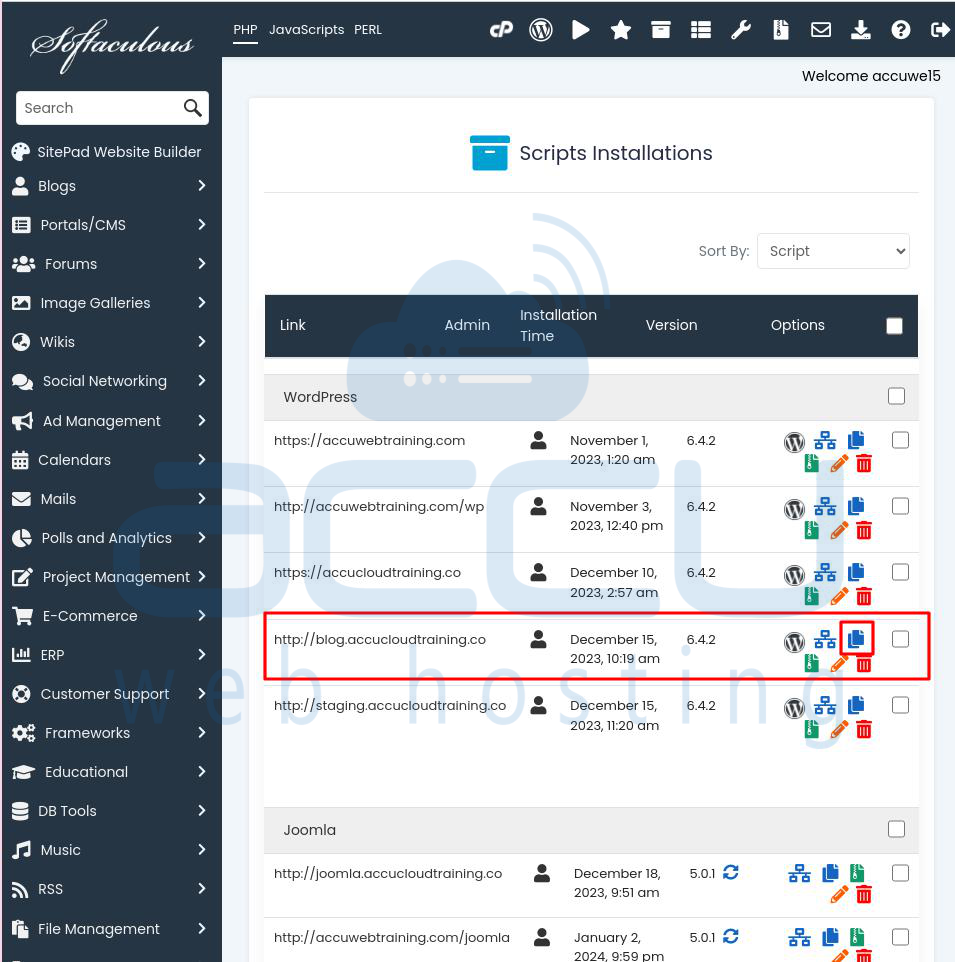
b. Wordpress Manager by Softaculous:
- Now, let's select "Wordpress Manager by Softaculous", then you will see the screen as seen below. You need to select the site you wish to clone.
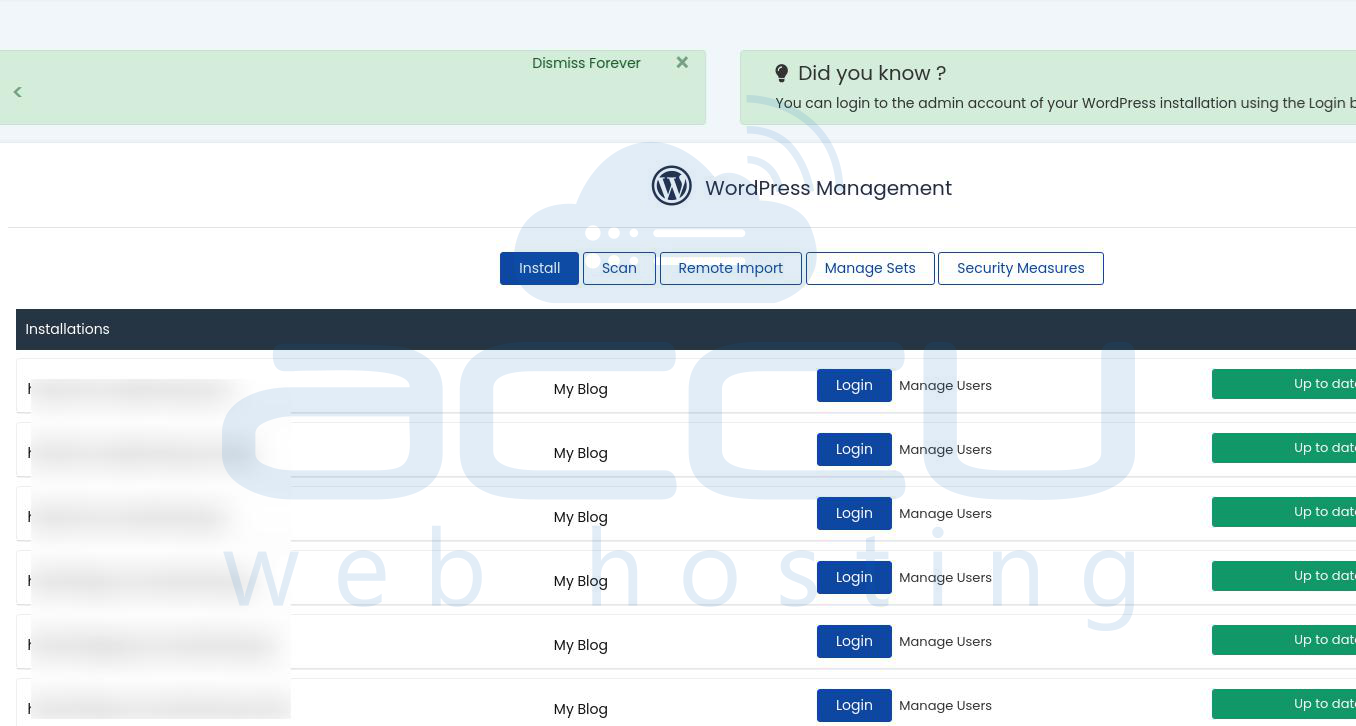
- Once you open the Installations section of the site you wish to clone, you need to click on "Clone" button at the bottom of the page as seen in the image below.
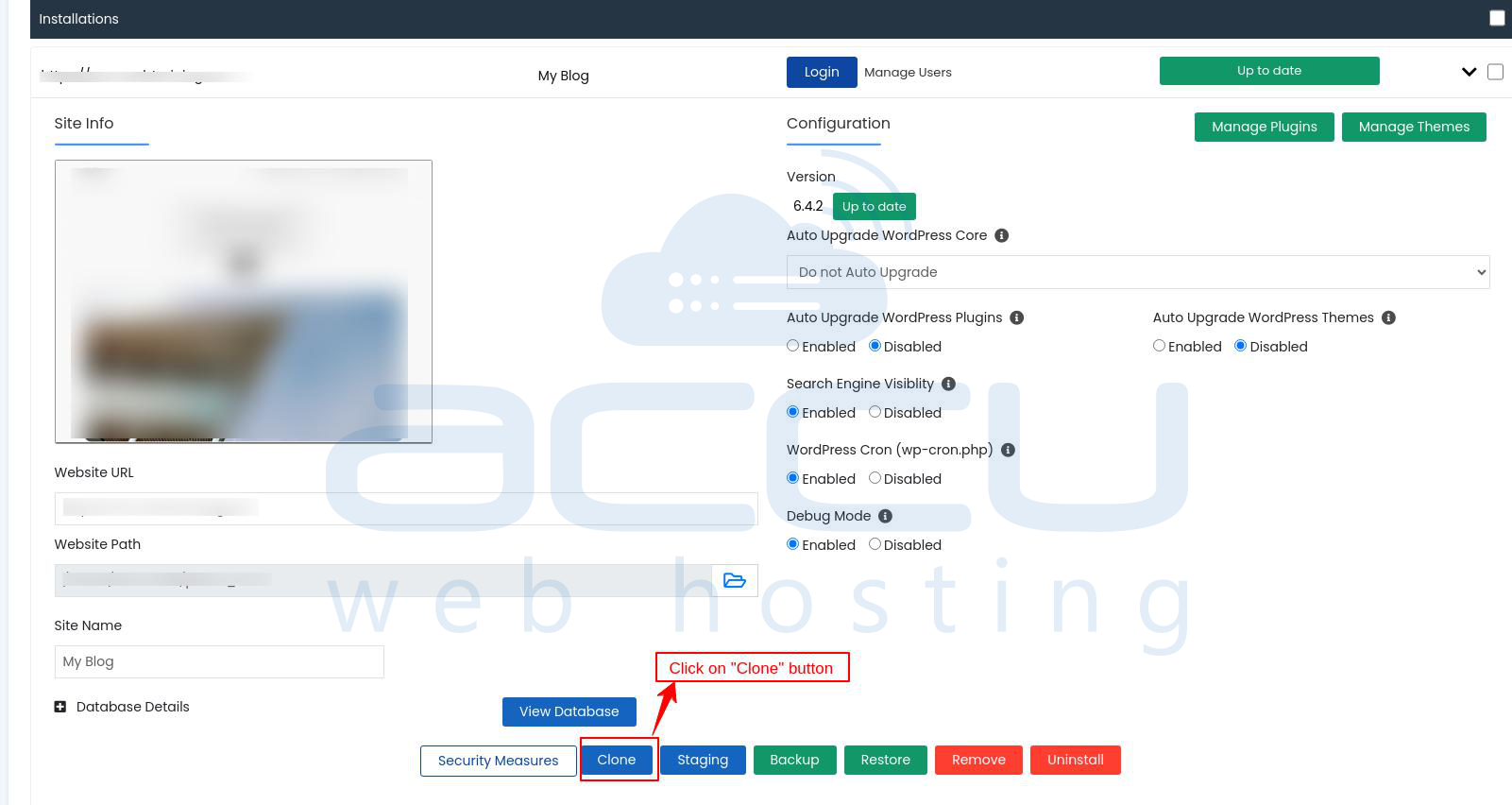
- Once you click on "Clone" button, you will see the below the screen.
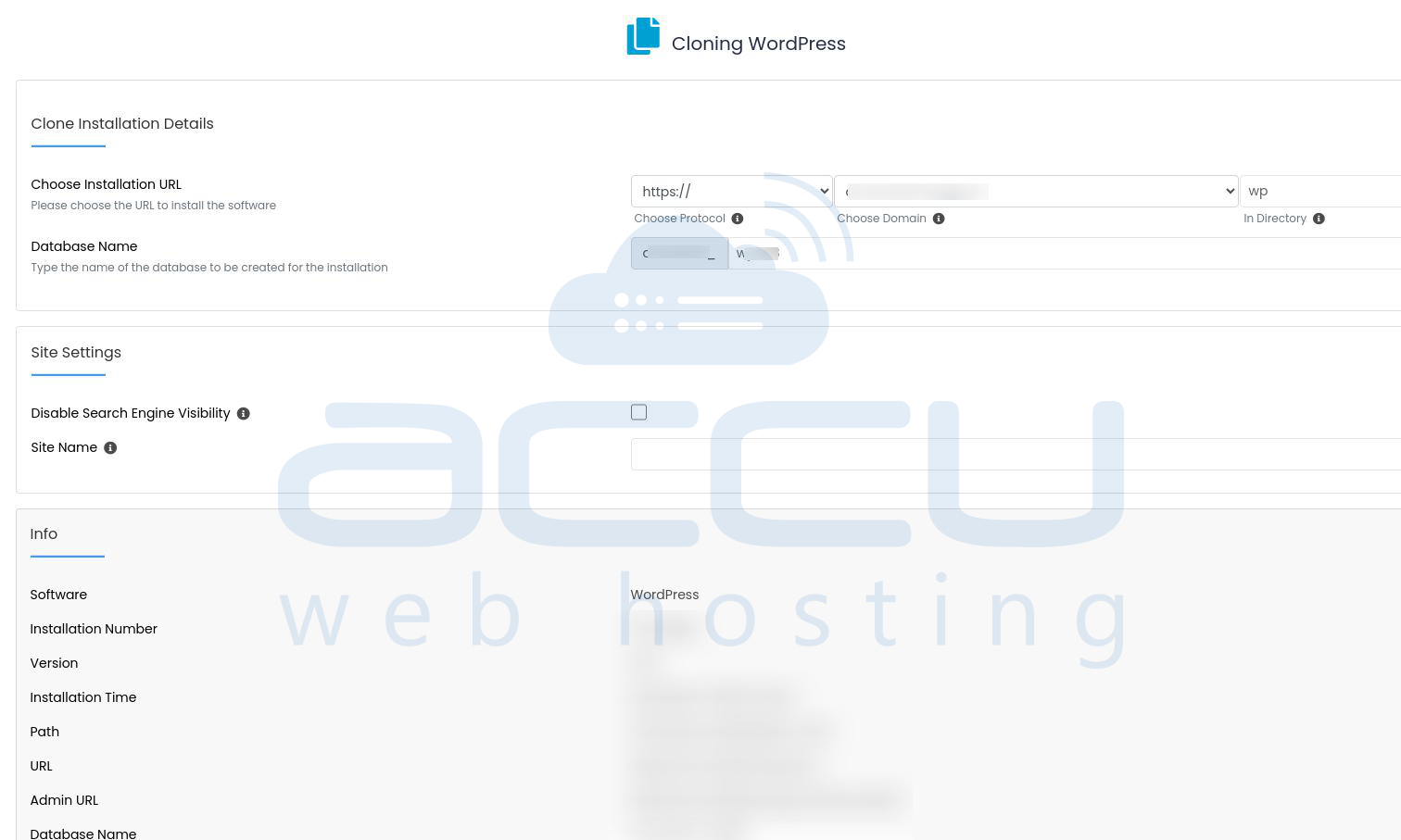
- Here, select the new domain or the path for installation.

- Now, click on "Clone Installation" button and you will be redirected to Clone Installation page.
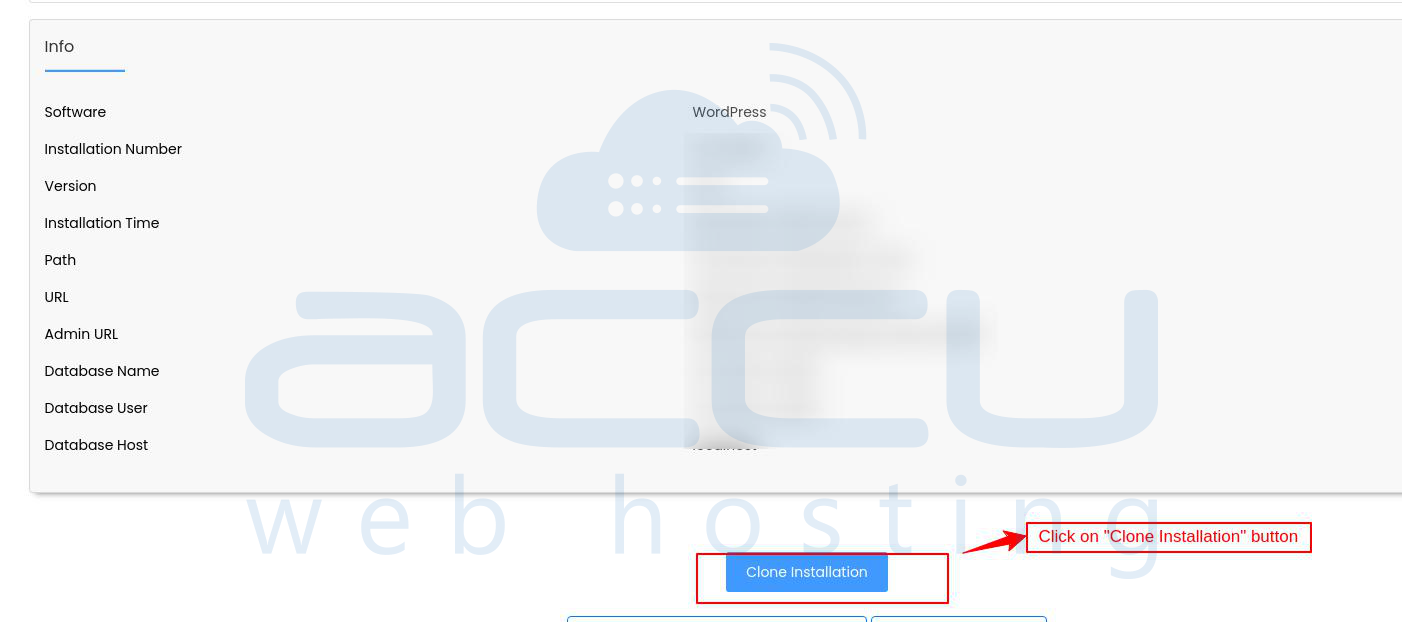
Step 5: Now, You'll be taken to the Clone Installation page. Here are the details to fill out:
Choose Installation URL: Pick the WordPress installation to clone.
Choose Protocol: Select HTTP or HTTPS, with or without www, matching the live site.
Choose Domain: Choose the same domain as the live site.
In Directory: Enter a directory name for the clone site.
Database Name: Use the default value unless you have a specific need.
(Optional) Disable Search Engine Visibility: If checked, search engines will be discouraged from indexing the site.
(Optional) Site Name: Enter a name for the cloned website or leave it blank for the same name as the source website.
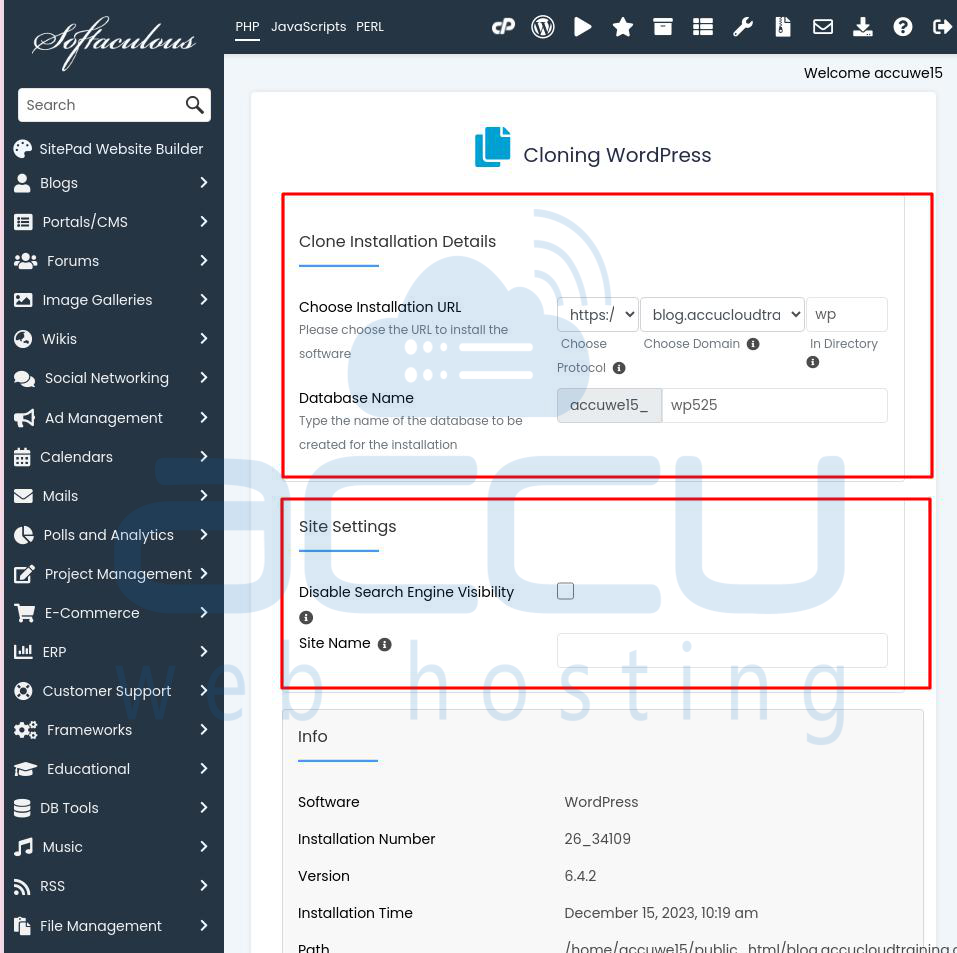
Step 6: Click "Clone Installation" to finish.
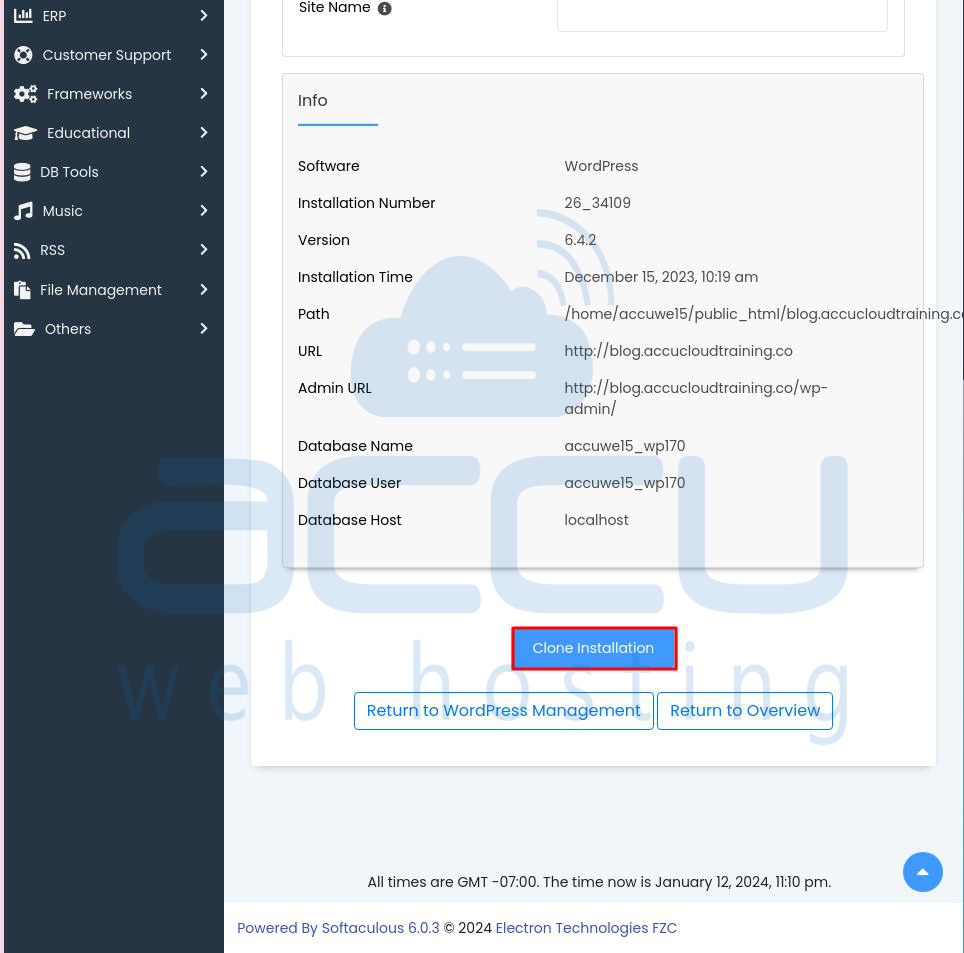
Softaculous will create an identical clone, including the database, mimicking the original website.
After cloning, you'll see a success message.
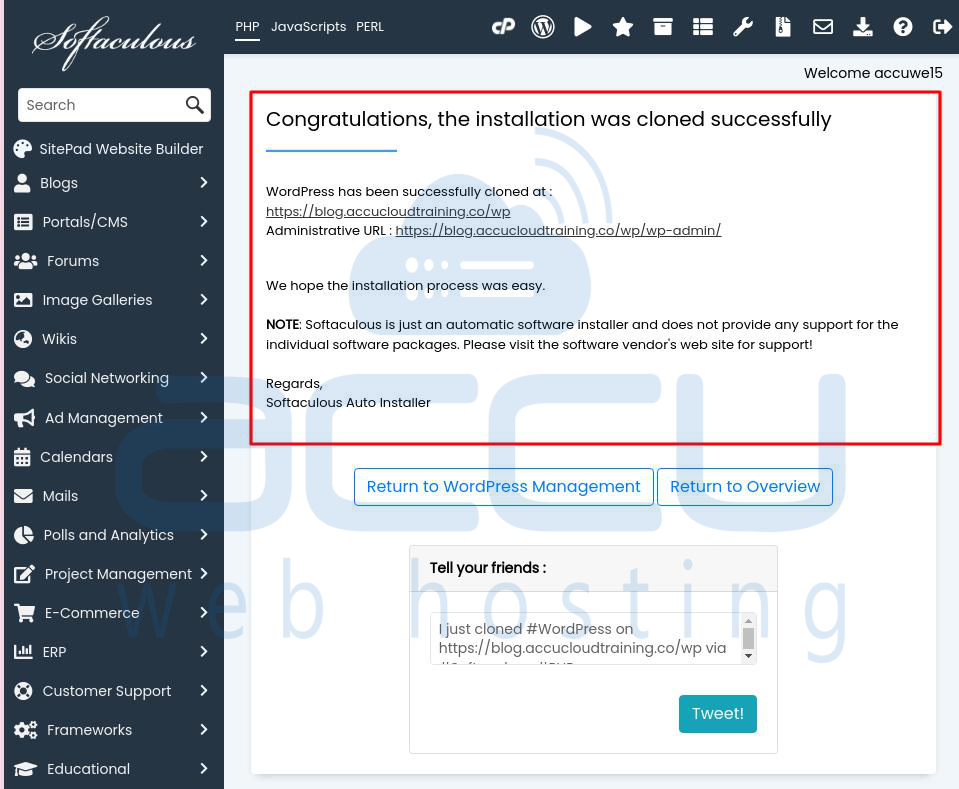
Remember:
- The time to clone depends on the source installation's size.
- The username and password for the cloned site are the same as the source installation.
- You will receive the clone installation details via email (if the emails are enabled).
Conclusion:
In conclusion, cloning a WordPress website using Softaculous is a straightforward process that allows you to quickly duplicate your site for various purposes, such as testing, development, or creating backups.
By following the simple steps within the Softaculous interface, you can efficiently replicate your WordPress site without the need for extensive technical knowledge or manual intervention. This method provides a convenient solution for users looking to streamline the website cloning process.



